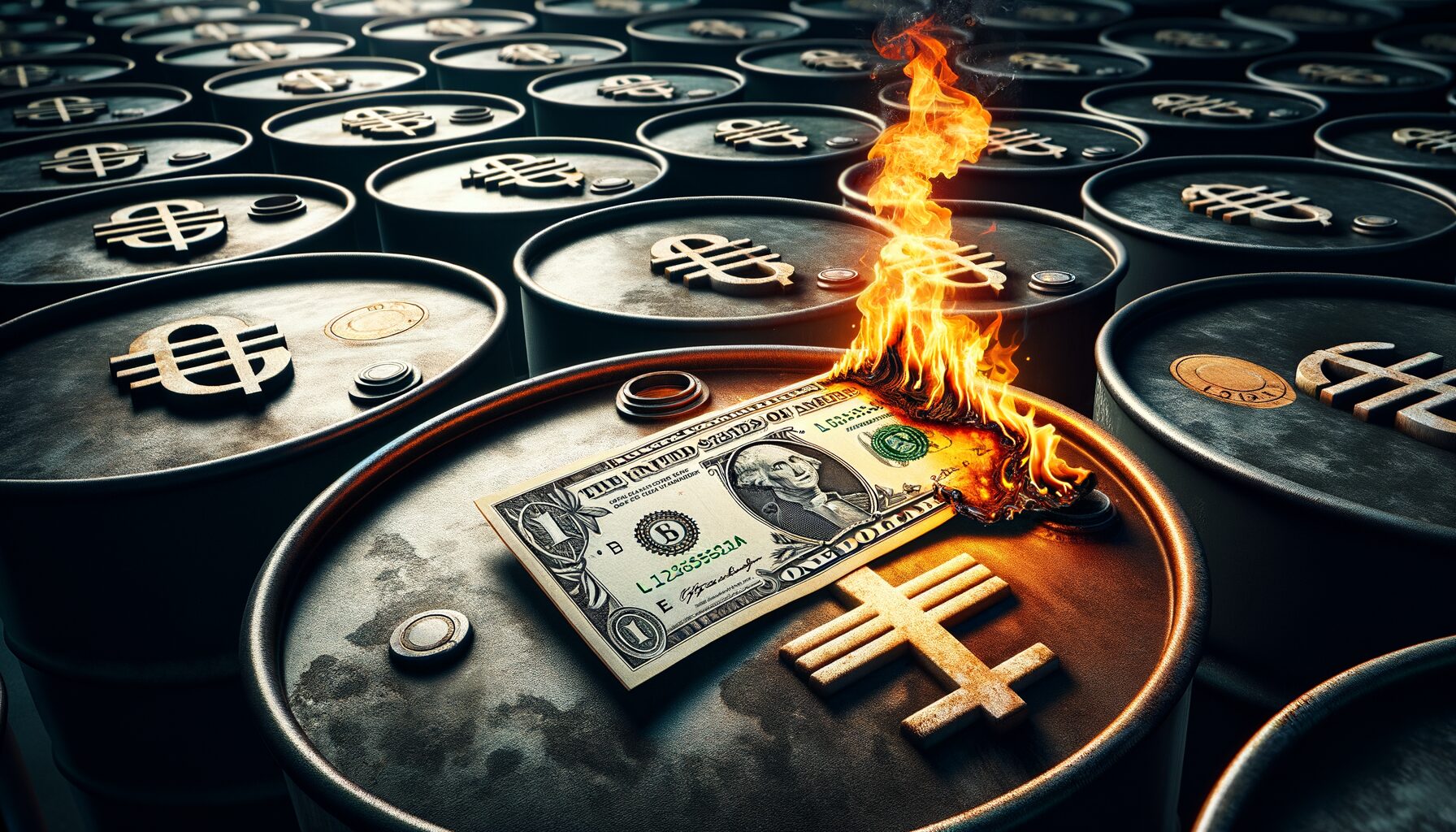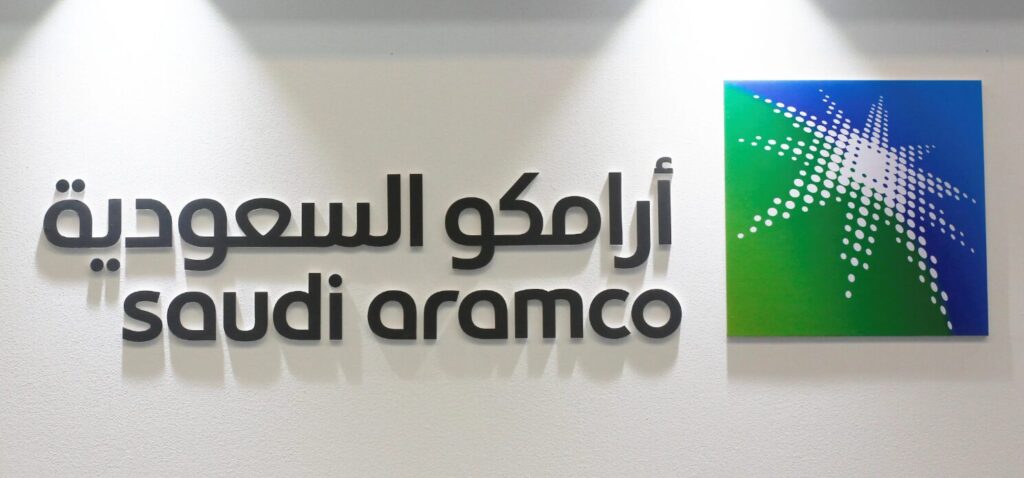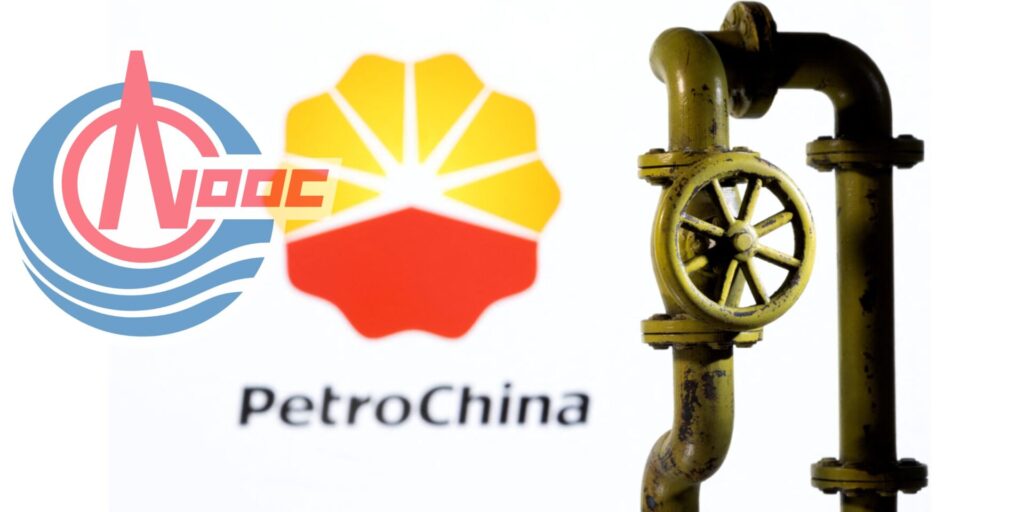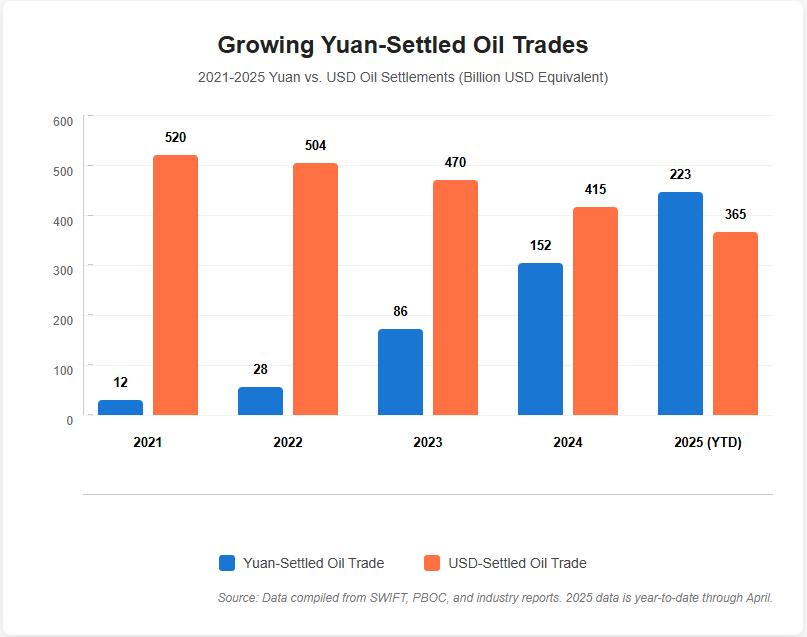De-Dollarization: 5 Oil Giants Now Settling in Yuan, Not USD

De-dollarization is definitely gaining momentum right now in 2025 as five major oil companies have begun to shift significant portions of their settlements from US dollars to Chinese yuan. This ongoing trend, which is currently being driven by strategic partnerships and also various geopolitical tensions, signals a potential reshaping of the global financial system that has, for many decades, been dominated by the dollar.
Also Read: Top 3 Cryptocurrencies That Could Hit New All-Time Highs In 2025
China’s Influence Grows as Oil Giants Switch from USD to Yuan

1. Sinopec Leads Yuan-Based Energy Trade

The Chinese refiner Sinopec stands as the biggest oil refinery in China and leads the way for yuan payment deals. Sinopec established the important milestone of Saudi Aramco in creating a $4 billion yuan-denominated joint venture during April 2025 while accelerating worldwide de-dollarization initiatives.
According to Reuters:
“Sinopec and its unit shall contribute 7.20 billion yuan and 14.40 billion yuan in cash, respectively. The remaining amount, representing 25% of the registered capital of the joint venture, will come from AAS (Aramco Asia Singapore Pte).”
2. Saudi Aramco Expands Yuan-Based Projects

Saudi Aramco, which is currently the world’s largest oil exporter, has also been expanding yuan-based refining and petrochemical projects in China. And although it’s not fully settled in yuan just yet, Aramco’s growing partnership with Chinese firms certainly signals a strategic shift toward de-dollarization in oil trade.
Dean Mikkelsen, Editor of Oil & Gas Middle East, stated:
“The strategic economic ties between Saudi Arabia and China are reshaping the global oil trade, particularly through the growing use of the Chinese renminbi (RMB) in oil transactions.”
Also Read: Dogecoin: How High Can DOGE Rise Once Its ETF Goes Live?
3. Gazprom – Russian Energy Companies Pivot to Yuan

Gazprom, Russia’s major state-owned energy company, has really accelerated yuan settlements due to Western sanctions. And in 2025, Gazprom continues to ramp up pipeline gas and LNG to China via yuan trade agreements, which is another clear indicator of the de-dollarization trend.
Wu Dahui, deputy dean of Tsinghua University’s Russian Institute was clear about the fact that:
“The recent sanctions on Gazprombank have dealt a blow to Russia’s energy trade, but new channels have been identified to resolve payment issues, which will support [Russia-China] trade next year.”
4. PetroChina & CNOOC – Chinese Oil Companies Are Leaders In Digital Yuan Adoption

PetroChina actually completed China’s first crude oil trade in digital yuan back in 2023, while CNOOC also executed the first LNG deal settled in yuan with TotalEnergies in that same year. These developments, along with other similar initiatives, represent critical steps in the ongoing de-dollarization process.
E. Yongjian, vice general manager of Bank of Communications’ research department, had this to say:
“The United States weaponising tariffs has cast doubt over U.S. asset safety, undercut trust in the dollar, and shaken the greenback’s global status. That, in turn, has made yuan assets more attractive, and will help broaden cross-border use of the Chinese currency.”
Challenges Remain Despite Progress

Despite all the recent advances in de-dollarization, there are still some significant obstacles that persist. At the moment, the yuan currently accounts for only about 5.3% of SWIFT trade finance settlements, compared to the dollar’s dominant 84%.
Qu Fengjie, researcher at China’s National Development and Reform Commission, suggested:
“If the U.S. enters recession, and China gains the upper hand in this round of Sino-U.S. rivalry – a scenario dubbed ‘east rising and west declining’ – that’s indeed good for the yuan over the long term. China can break the old order of the international monetary system.”
Also Read: Bessent Says Interest Rates, Gas Prices, and Mortgages Are Down – Here’s What That Means for You
The de-dollarization trend among these five oil giants really highlights China’s growing influence in global energy markets and also reflects broader shifts in international finance as more and more countries are now seeking alternatives to dollar dependency.
Read More

5-Year Forecast: U.S. Dollar to Lose 10-15%—The Impact on S&P 500 and Global Equity Returns
De-Dollarization: 5 Oil Giants Now Settling in Yuan, Not USD

De-dollarization is definitely gaining momentum right now in 2025 as five major oil companies have begun to shift significant portions of their settlements from US dollars to Chinese yuan. This ongoing trend, which is currently being driven by strategic partnerships and also various geopolitical tensions, signals a potential reshaping of the global financial system that has, for many decades, been dominated by the dollar.
Also Read: Top 3 Cryptocurrencies That Could Hit New All-Time Highs In 2025
China’s Influence Grows as Oil Giants Switch from USD to Yuan

1. Sinopec Leads Yuan-Based Energy Trade

The Chinese refiner Sinopec stands as the biggest oil refinery in China and leads the way for yuan payment deals. Sinopec established the important milestone of Saudi Aramco in creating a $4 billion yuan-denominated joint venture during April 2025 while accelerating worldwide de-dollarization initiatives.
According to Reuters:
“Sinopec and its unit shall contribute 7.20 billion yuan and 14.40 billion yuan in cash, respectively. The remaining amount, representing 25% of the registered capital of the joint venture, will come from AAS (Aramco Asia Singapore Pte).”
2. Saudi Aramco Expands Yuan-Based Projects

Saudi Aramco, which is currently the world’s largest oil exporter, has also been expanding yuan-based refining and petrochemical projects in China. And although it’s not fully settled in yuan just yet, Aramco’s growing partnership with Chinese firms certainly signals a strategic shift toward de-dollarization in oil trade.
Dean Mikkelsen, Editor of Oil & Gas Middle East, stated:
“The strategic economic ties between Saudi Arabia and China are reshaping the global oil trade, particularly through the growing use of the Chinese renminbi (RMB) in oil transactions.”
Also Read: Dogecoin: How High Can DOGE Rise Once Its ETF Goes Live?
3. Gazprom – Russian Energy Companies Pivot to Yuan

Gazprom, Russia’s major state-owned energy company, has really accelerated yuan settlements due to Western sanctions. And in 2025, Gazprom continues to ramp up pipeline gas and LNG to China via yuan trade agreements, which is another clear indicator of the de-dollarization trend.
Wu Dahui, deputy dean of Tsinghua University’s Russian Institute was clear about the fact that:
“The recent sanctions on Gazprombank have dealt a blow to Russia’s energy trade, but new channels have been identified to resolve payment issues, which will support [Russia-China] trade next year.”
4. PetroChina & CNOOC – Chinese Oil Companies Are Leaders In Digital Yuan Adoption

PetroChina actually completed China’s first crude oil trade in digital yuan back in 2023, while CNOOC also executed the first LNG deal settled in yuan with TotalEnergies in that same year. These developments, along with other similar initiatives, represent critical steps in the ongoing de-dollarization process.
E. Yongjian, vice general manager of Bank of Communications’ research department, had this to say:
“The United States weaponising tariffs has cast doubt over U.S. asset safety, undercut trust in the dollar, and shaken the greenback’s global status. That, in turn, has made yuan assets more attractive, and will help broaden cross-border use of the Chinese currency.”
Challenges Remain Despite Progress

Despite all the recent advances in de-dollarization, there are still some significant obstacles that persist. At the moment, the yuan currently accounts for only about 5.3% of SWIFT trade finance settlements, compared to the dollar’s dominant 84%.
Qu Fengjie, researcher at China’s National Development and Reform Commission, suggested:
“If the U.S. enters recession, and China gains the upper hand in this round of Sino-U.S. rivalry – a scenario dubbed ‘east rising and west declining’ – that’s indeed good for the yuan over the long term. China can break the old order of the international monetary system.”
Also Read: Bessent Says Interest Rates, Gas Prices, and Mortgages Are Down – Here’s What That Means for You
The de-dollarization trend among these five oil giants really highlights China’s growing influence in global energy markets and also reflects broader shifts in international finance as more and more countries are now seeking alternatives to dollar dependency.
Read More

